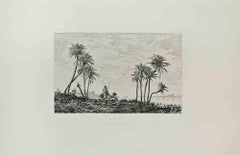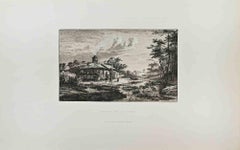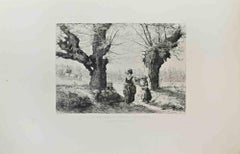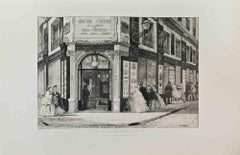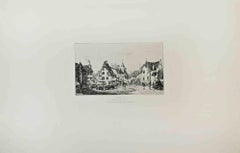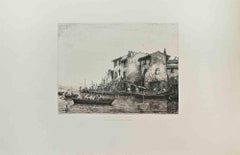19th Century Landscape Prints
Modern 19th Century Landscape Prints
Etching
Modern 19th Century Landscape Prints
Etching
Modern 19th Century Landscape Prints
Etching
Modern 19th Century Landscape Prints
Etching
Modern 19th Century Landscape Prints
Etching
Modern 19th Century Landscape Prints
Etching
Modern 19th Century Landscape Prints
Etching
Victorian 19th Century Landscape Prints
Watercolor
Old Masters 19th Century Landscape Prints
Ink, Handmade Paper
Modern 19th Century Landscape Prints
Etching
Naturalistic 19th Century Landscape Prints
Lithograph
Victorian 19th Century Landscape Prints
Engraving, Woodcut
Realist 19th Century Landscape Prints
Drypoint, Etching
Victorian 19th Century Landscape Prints
Engraving
Victorian 19th Century Landscape Prints
Lithograph
Naturalistic 19th Century Landscape Prints
Engraving, Etching
Realist 19th Century Landscape Prints
Lithograph
Other Art Style 19th Century Landscape Prints
Lithograph
French School 19th Century Landscape Prints
Watercolor, Handmade Paper, Engraving
Victorian 19th Century Landscape Prints
Handmade Paper, Laid Paper, Drypoint, Etching
Modern 19th Century Landscape Prints
Etching
Modern 19th Century Landscape Prints
Etching
Modern 19th Century Landscape Prints
Etching
Victorian 19th Century Landscape Prints
Lithograph
Naturalistic 19th Century Landscape Prints
Lithograph
French School 19th Century Landscape Prints
Watercolor, Handmade Paper, Engraving
French School 19th Century Landscape Prints
Laid Paper, Engraving, Aquatint
Modern 19th Century Landscape Prints
Etching
Modern 19th Century Landscape Prints
Etching
Modern 19th Century Landscape Prints
Etching
English School 19th Century Landscape Prints
Handmade Paper, Lithograph, Watercolor
Pointillist 19th Century Landscape Prints
Color, Lithograph
Modern 19th Century Landscape Prints
Woodcut
Victorian 19th Century Landscape Prints
Lithograph
Modern 19th Century Landscape Prints
Etching
French School 19th Century Landscape Prints
Handmade Paper, Engraving, Etching
Naturalistic 19th Century Landscape Prints
Lithograph
19th Century Landscape Prints
Engraving, Mezzotint
Impressionist 19th Century Landscape Prints
Lithograph, Watercolor, Gouache
19th Century Landscape Prints
Engraving
Modern 19th Century Landscape Prints
Etching
Naturalistic 19th Century Landscape Prints
Lithograph
19th Century Landscape Prints
Mezzotint
French School 19th Century Landscape Prints
Handmade Paper, Engraving, Photogravure
Naturalistic 19th Century Landscape Prints
Lithograph
French School 19th Century Landscape Prints
Handmade Paper, Woodcut
Art Nouveau 19th Century Landscape Prints
Lithograph
French School 19th Century Landscape Prints
Laid Paper, Etching
Romantic 19th Century Landscape Prints
Engraving, Aquatint
French School 19th Century Landscape Prints
Laid Paper, Etching, Engraving
Old Masters 19th Century Landscape Prints
Engraving
Victorian 19th Century Landscape Prints
Lithograph
Modern 19th Century Landscape Prints
Woodcut
19th Century Landscape Prints
Mezzotint
Symbolist 19th Century Landscape Prints
Etching, Aquatint
Modern 19th Century Landscape Prints
Lithograph
Modern 19th Century Landscape Prints
Lithograph
Modern 19th Century Landscape Prints
Lithograph
Modern 19th Century Landscape Prints
Lithograph
Modern 19th Century Landscape Prints
Lithograph
